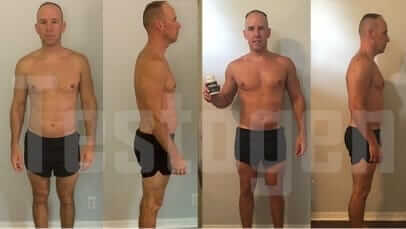Creatine is one of the most researched and proven, effective supplements out there, so it should be on your list of must-have supplements. Find out here how to dose your creatine effectively and how it can help get you closer to your goals.
Creatine has been around since the first days of supplements. In fact, it may have been one of the leading products that yielded the boom of the supplement industry as we know it today. There are a few things you need to know when it comes to supplementing with creatine.
What You Can Expect from Creatine
Creatine has been proven to help with the following:
- Muscular strength
- Muscular endurance
- Muscular power
- Increase in lean body weight
When you first start to take creatine there will be a short adjustment period, as your body acclimates. But once you get the muscle saturated with excess creatine, you’ll start to see the above benefits. There are a couple ways to ensure you completely fill your muscles with creatine and get the most bang for your buck with your creatine supplementation.
Loading Strategy
If you choose to load, you’ll take large amounts of creatine over the first few days of starting creatine. Typically, the loading phase consists of 20g/day. The average loading phase is around five days but can extend as far as two weeks.
If a longer loading phase is preferred, then you’ll need to lower your per day gram total. It’s a matter of preference really; follow the guidelines listed below if you want to make it simple.
Non-Loading Strategy and Maintenance Phase
In a non-loading creatine strategy, you’ll start off with a moderate dose and simply continue that same dosing throughout your creatine cycle.
Loading Strategy Aggressive: 20g/ Day x 5 Days
Loading Strategy Conservative: 10g/ Day x 10 Days
Non-Load / Maintenance: 5g/ Day x [ ]
Once you’ve finished your loading stage, you’ll then switch over to the maintenance phase. As long as dosing is not excessive, it is not necessary to cycle creatine, as it is a naturally occurring nutrient.
As with anything, too much can be a bad thing. So, please, don’t go overboard. Always dose appropriately.
Creatine Myths Debunked
Water Retention
Yes, creatine does call for the absorption of water (so do carbs, mind you). However, creatine works inside the muscle cell, in the mitochondria, to be more specific.
Therefore, creatine calls for the muscles to hold on to more water. Now remember, muscle tissue is 60-70% water. So, this isn’t what you would call “water weight.”
Creatine Hydrochloride (Creatine HCl)
Many companies are pushing this type of creatine because of its lack of water retention. But, as previously discussed, creatine’s water retention isn’t necessarily a bad thing.
In fact, you want that water retention in the muscles. So, those who are pushing creatine HCl are offering a less effective product. If you have fallen victim to this sales gimmick, don’t feel bad. There’s a good chance the person who sold it to you didn’t know and also fell victim to clever marketing jargon.
The “Go-To” Form of Creatine
Creatine monohydrate is the form you want. It’s the original and most effective. In the health and wellness industry, a shiny new development of the old, tried and true stuff sells like hotcakes.
It’s basic human nature to be attracted to what’s new. It’s just the natural curiosity of mankind. Marketing tactics exploit this natural characteristic to increase sales. And boy, is it effective.
Don’t be fooled by the clever marketing of the less effective forms of creatine. Creatine monohydrate is the way to go.
Where and How to Get Creatine
If you consume a pre-made beverage with creatine in it (i.e. protein shake, pre-workout drink, etc.), don’t count on getting any benefit out of the creatine. Once creatine hits liquid, its shelf life begins to expire.
When it comes to creatine, it’s best to buy it in powder form. In many cases, it comes with zero taste and can be mixed with any beverage of your choosing. A good quality creatine monohydrate will blend easily into the beverage of your choice.
When selecting a creatine powder, be sure that the ingredient list has only creatine monohydrate. Creatine monohydrate is very stable by itself, in its powder form. There is no need for any other ingredients to be with it.
Creatine is widely available. It shouldn’t be too hard to find at your local health food store. Abide by the rules above and enjoy all the benefits of one of the most effective supplements on the market!






